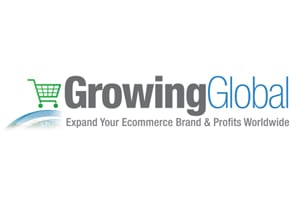 If you’re a merchant and you’re not engaged in global ecommerce, you’re missing out on a massive opportunity – but you have to enter it with a clear plan and strategy in place, starting slowly and building on your successes.
If you’re a merchant and you’re not engaged in global ecommerce, you’re missing out on a massive opportunity – but you have to enter it with a clear plan and strategy in place, starting slowly and building on your successes.
Attendees at Multichannel Merchant’s inaugural Growing Global 2014 conference last week in Long Beach, CA, heard again and again from speakers that the global ecommerce window is wide open – for merchants here and abroad – so it should not be a question of if, but how and where to jump onboard the express train.
“We need to stop calling it global ecommerce, and just call it ecommerce,” said Kris Green, chief strategy officer for Borderfree, during a keynote presentation. “Global has to be part of your mindset in everything you do. In terms of consumer expectations, they don’t want to be surprised at delivery, and want to be able to make an informed decision based on a fair price without caring where it ships from. It’s a mindset that transcends borders.”
While the global B2C ecommerce opportunity is clearly present – with eMarketer projecting growth of 20% in 2014 to $1.5 trillion – many merchants remain hesitant. According to the MCM 2014 Outlook survey, 73% of respondents said their websites were not set up for global ecommerce.
“I see companies struggling to get to the next level in global ecommerce,” said Alex Golshan, vice president of omnichannel and international ecommerce for fashion retailer BCBG. “They’re not sure about the potential, and don’t want to take risks. Plus they have to find a way to prioritize global against domestic. The idea is to start small. You need to develop specific pricing and promotion for each country, and replicate that process wherever you go.”
Chuck Whiteman, senior vice president of client services for MotionPoint Corp., said in his presentation on “Facing Your Key Global Challenges” that success in new markets wasn’t easy but well worth the effort.
“Replicating your business model in new markets requires investments in market research, logistics, marketing and sales, and none of these things is easy or free,” Whiteman said. “But commit to whichever growth strategy you’ve selected, avoid mistakes and I for one will bet on your success. Why? Because you’ve already proven that you’re good enough to win here in the U.S. – the most competitive market on the planet. As long as you remain committed to winning and are humble enough to do your homework, there’s a pretty good chance you’ll avoid the mistakes and succeed.”
Fredjoseph Goldner, CEO of Aeropost, said one thing he was struck by during Growing Global was that there are so many variables by country and region that there is no such thing as an overarching global ecommerce solution or approach.
“The world is too complex and there are so many sticking points including payment, language, taxes, transportation and merchandising,” Goldner said. “To assume that doing business in the rest of the world is just like doing business in the U.S. is a major mistake.”
Goldner also said that while he heard a lot of talk about major opportunities in countries like Russia and Brazil, merchants should look first to markets with less risks and hurdles, like Canada or the UK. “They should begin to get exposure to other markets where cross border has already started and is part of the culture,” he said.
Henning Heeson, managing director of Salesupply AG in Germany, had a different take on the market decision calculus. He said brands looking to jump into global ecommerce should consider not just where they can sell the most but where they can do it profitably.
“American brands expand first to English-speaking markets first, so they don’t have to translate,” Heeson said. “That’s not an economic choice, it’s the easy way. The consideration factor should be, ‘Can I get a better price for the same or lower cost?’ German companies do the same – they go to Austria and Switzerland first, but it’s not an economic decision. They should look at prices, competition, marketing and logistics costs. Go where there are better margins; if not it’s a short-term game.”
Some other key takeaways from Growing Global:
- Global B2C ecommerce is growing much faster than in the U.S. (up 20% this year vs. 11.8% domestically, according to eMarketer), causing more merchants here to look cross-border.
- Retailers are seeing 20%-30% of their website traffic coming from non-U.S. IP addresses, causing them to realize how much revenue they are missing.
- The vendor community has figured out how to make cross-border trade not only possible but easier for merchants.
- Marketplaces are a natural place to dip your toe into global ecommerce without a major investment.
